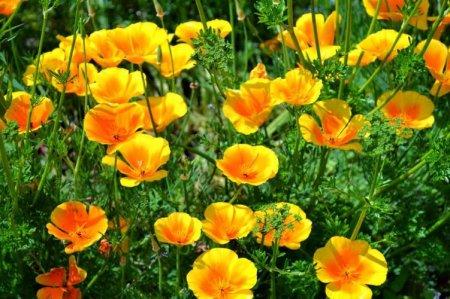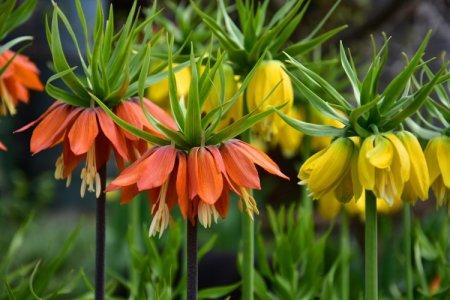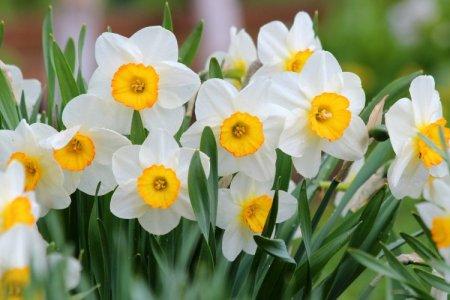
The bright flowers of gatsania resemble striped multi-colored daisies. They look amazing in flower beds and in bouquets. And among dozens of varieties, you can find a color for every taste. Let's talk about what gatsaniya are and how to take care of them!
general information
Among the people, gatsaniya was very romantically called "midday gold", and all because the flower opens most beautifully in the midday sun. It is a short plant, rarely more than 30 cm, with beautiful dark leaves and a short stem. On the reverse side, the leaf plates are slightly fuzzy to protect against pests, frost and to retain moisture.
With all the overall diminutiveness, gatsania flowers are quite large, and bloom up to 10 cm. They look like baskets collected from smaller inflorescences. The most common colors are yellow, orange and red. One small plant can produce more than 30 buds.
Gatsania blooms around mid-summer, but some late varieties bloom in August. At the same time, she will decorate the garden with her colorful buds almost until the end of autumn.

Types of gatsania
Of the dozens of varieties of gatsania, several of the most popular can be distinguished. But breeders every year are working on the emergence of new hybrid species with even more interesting colors!
Long-rifle gapping
This is a rather tall variety for gatsania - up to 20 cm. Bright yellow inflorescences with a brownish center reach up to 7 cm in diameter. Against their background, small carved leaves seem gray.

Peacock gatsaniya
This variety differs from its relatives in the unusual shape of long and narrow leaves. They can grow up to 20 cm in length, and the main color of the buds is rich amber.

Feathery gatsaniya
Another group of varieties got its name from the feathery shape of the dissected leaves. And they also had a rather tall stem - up to 20 cm in height.

Shiny gatsaniya
The inflorescences of this species are slightly smaller - up to 6 cm, but here there is a much greater richness of shades - from classic yellow to pink or dark brown. This species is also called harsh.

Hybrid gating
This category unites all breeding hybrids that are valued for their excellent decorative properties. The fleecy leaves are cast in silver and are collected in dense rosettes, over which large bright buds bloom.

Gatsania Potsi
This variety cannot be confused with others simply because the flowers of such a gatzania are simply gigantic. With a general stockiness of the plants, the baskets bloom up to 12 cm in diameter.

Single-flowered gating
The miniature variety is grown as a creeping groundcover. In height, such bushes rarely rise above 10 cm, and during the flowering season, the green carpet is densely covered with the same small pale yellow flowers.

Gatsania care
Gatsania is the perfect flower for budding gardeners because it is not demanding at all. Under favorable weather conditions, for a comfortable life, she only needs warmth and sun.
Temperature
Gatsaniya grows best in warmth, and this applies to all stages of flower development. If the temperature drops below 18 degrees during seed germination, the plant is unlikely to die, but the process will last much longer.

Lighting
Bright sunlight is essential for gating. She is not afraid of direct rays and sultry summer. On the contrary, even an almost imperceptible openwork shadow from the crown of the nearest tree can harm her.

Watering
Gatsania tolerates short-term dryness better than constant dampness. She needs systematic watering as the soil dries up in the summer, but it must be moderate and rather rare. Wait until the soil is really dry.

The soil
As we already said, gatsania does not tolerate an excess of moisture.And this is what determines the choice of soil for this delicate flower. The soil must be light, loose and well-drained.

Fertilizers and feeding
Abundantly blooming gatsaniya responds favorably to periodic complex feeding. But you do not need to use them more often than once every 1-1.5 months. Poor stony soils can be an exception - then you need to look at the specific situation.

Pruning
Gatsania does not need compulsory formation and preventive pruning, like other small garden flowers. But it is recommended to cut off the faded buds immediately so that they do not waste the vitality of the plant in vain.

Why doesn't gatsania bloom?
There are only three main reasons why beautiful gatsaniya is in no hurry to release buds. First of all, this is excessive watering, which can ruin the entire planting.
It is also a lack of sunlight, because even a slight partial shade can play a role. And the third reason is late planting, in which case the gatsaniya simply does not have time to blossom.

Wintering
With annual varieties, everything is clear - they just need to be removed at the end of the season. But perennials will have to be dug up, planted in containers and sent to winter in a well-lit, but cool room at a temperature of 8-10 degrees with occasional watering.

Planting and breeding
Gatsania is planted from seed through seedlings. It is best to start the process in late March or early April. And immediately we recommend taking a high and deep container, because the taproot of the color quickly deepens.
We recommend planting gatsaniya immediately at a distance of a couple of centimeters, slightly pressing the seeds into the ground. Then they germinate under the film, but it needs to be ventilated daily and condensation removed. Within 2 weeks you will see sprouts.
If a pick is needed, it is carried out after the appearance of 4-5 leaves. After that, the plant can be gradually accustomed to the outdoors and hardened so that it can be transplanted into open ground at the end of May.

Pest and disease control
Gatsania is a rather delicate flower and is susceptible to pests like aphids and spider mites. In this case, it is better to prevent attack in advance, and prophylactically treat the garden with insecticides. In addition, the parasites are scared away by some fragrant herbs nearby.
Another problem is snails. They will have to be removed mechanically, or to attract their natural enemies, such as hedgehogs or birds. For preventive spraying, herbs, tea, coffee and hot peppers are used.
Of the diseases, gray rot is most often affected by gatsania, because this flower is very sensitive to high humidity. Brown spots appear on the leaves, which grow rapidly.
Do not plant the seedlings too close, thin out as needed, do not flood the leaves, and immediately remove all affected areas. Use fungicides or other specialized preparations to treat the diseased plant.

Gatsania - photo
Blooming gatsaniya really looks like a little sun in the garden. Just look how bright and spectacular they are!



























